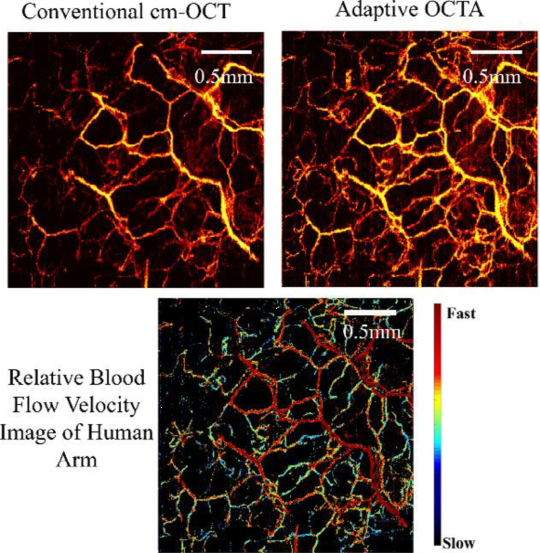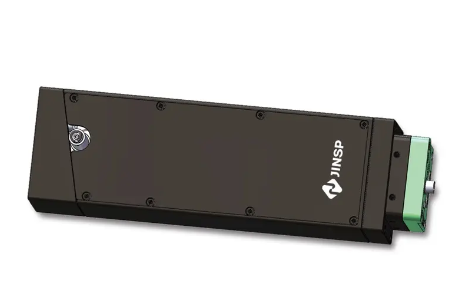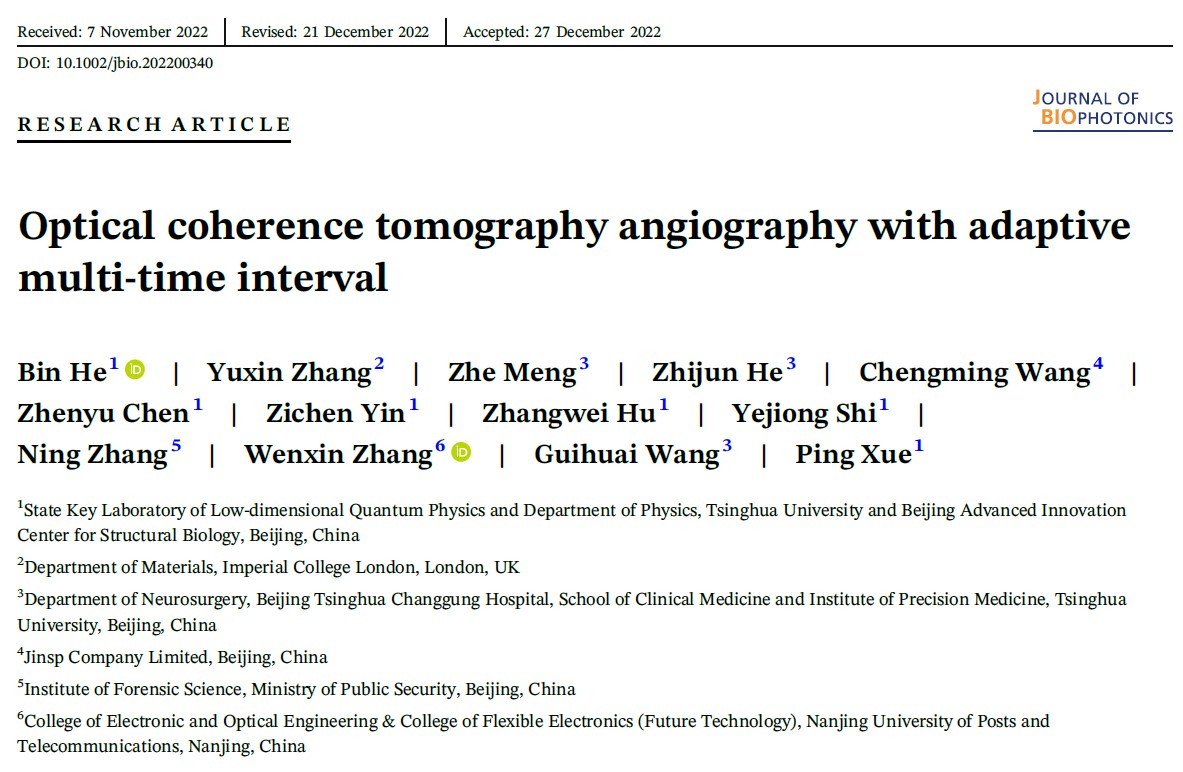1 Literature Sources
2 Summary of the Content
Optical Coherence Tomography (OCT) is a non-destructive, label-free, high-resolution, and non-invasive optical imaging method. Due to its micron-level high resolution, high penetration depth, and ultra-fast imaging speed, OCT stands out among many biological imaging technologies and plays an increasingly important role in numerous medical fields such as ophthalmology, brain science, cardiovascular, and gastrointestinal medicine. In recent years, based on the characteristics of intrinsic microvascular motion, OCT can achieve label-free angiographic imaging, which is crucial in disease diagnosis, such as early tumor diagnosis and grading. However, current OCT angiography still has shortcomings, such as long imaging times, low signal-to-noise ratio, and the inability to obtain blood flow velocity information.
In 2022, Bin He, a doctoral student from the Department of Physics at Tsinghua University, along with his advisor Professor Ping Xue, published an article titled "Optical coherence tomography angiography with adaptive multi-time interval" in the well-known journal *Journal of Biophotonics*, and it was featured on the cover of that issue (https://onlinelibrary.wiley.com/doi/10.1002/jbio.202370008). Professor Xue's research group proposed an adaptive spatiotemporal OCT blood flow imaging scheme, achieving high-speed, high-dynamic-range microvascular angiographic imaging and obtaining relative blood flow velocity images of human microvasculature. This scheme involves constructing a high-resolution frequency-domain OCT imaging system using a custom wavenumber linear spectrometer. The new adaptive high-speed scanning and correlated blood flow imaging technology significantly improved the signal-to-noise ratio and imaging speed of vascular images by 60% and 25%, respectively. This work was completed in collaboration with Professor Guihuai Wang’s team from the Neurology Center at Tsinghua Changgung Hospital.

It is worth mentioning that the ST830E OCT spectrometer from Jinsp Technology played an important role in this study. Its features such as wavenumber linearity, high diffraction efficiency, and high scanning speed provide significant advantages in research, medical, and industrial applications. The spectrometer employs a special optical path design, allowing for hardware-based wavenumber equal-interval sampling. The interference spectrum can be directly subjected to Fourier transform (FFT) without the need for a wavenumber resampling algorithm, greatly reducing data processing complexity. This not only improves the response speed of the spectrometer but also enhances the system's signal-to-noise ratio. With the use of a VPH (Volume Phase Holographic) grating, the diffraction efficiency is nearly 90%, and when combined with an optical path design optimized to the diffraction limit, it provides excellent imaging performance. The spectrometer boasts an industry-leading line scan rate of up to 250kHz and is equipped with a USB3.0 interface that can achieve a scanning rate of 20-130kHz, making OEM integration more efficient and straightforward.
In summary, OCTA has shown great potential and application value in the biomedical field. By integrating the ST830E OCT spectrometer from Jinsp Technology, it is possible to achieve fast, high-quality real-time imaging, providing robust technical support for the application of OCT in the biomedical field. For more details, please visit: Best ST830E(ST850E) OCT spectrometer manufacturers and suppliers | JINSP (jinsptech.com)
3 Instrument Recommendation | ST830E OCT Spectrometer

Post time: Jun-07-2024


